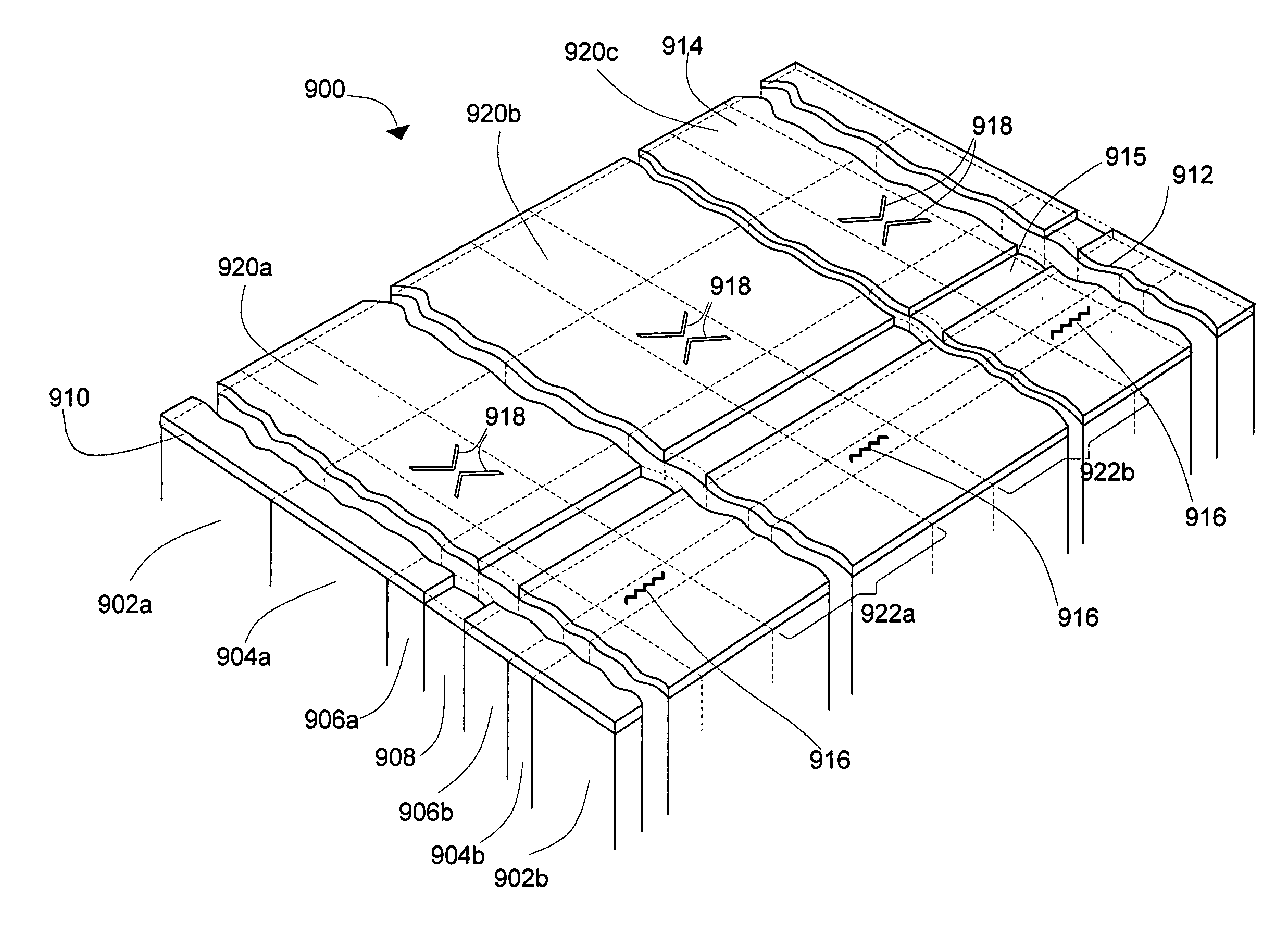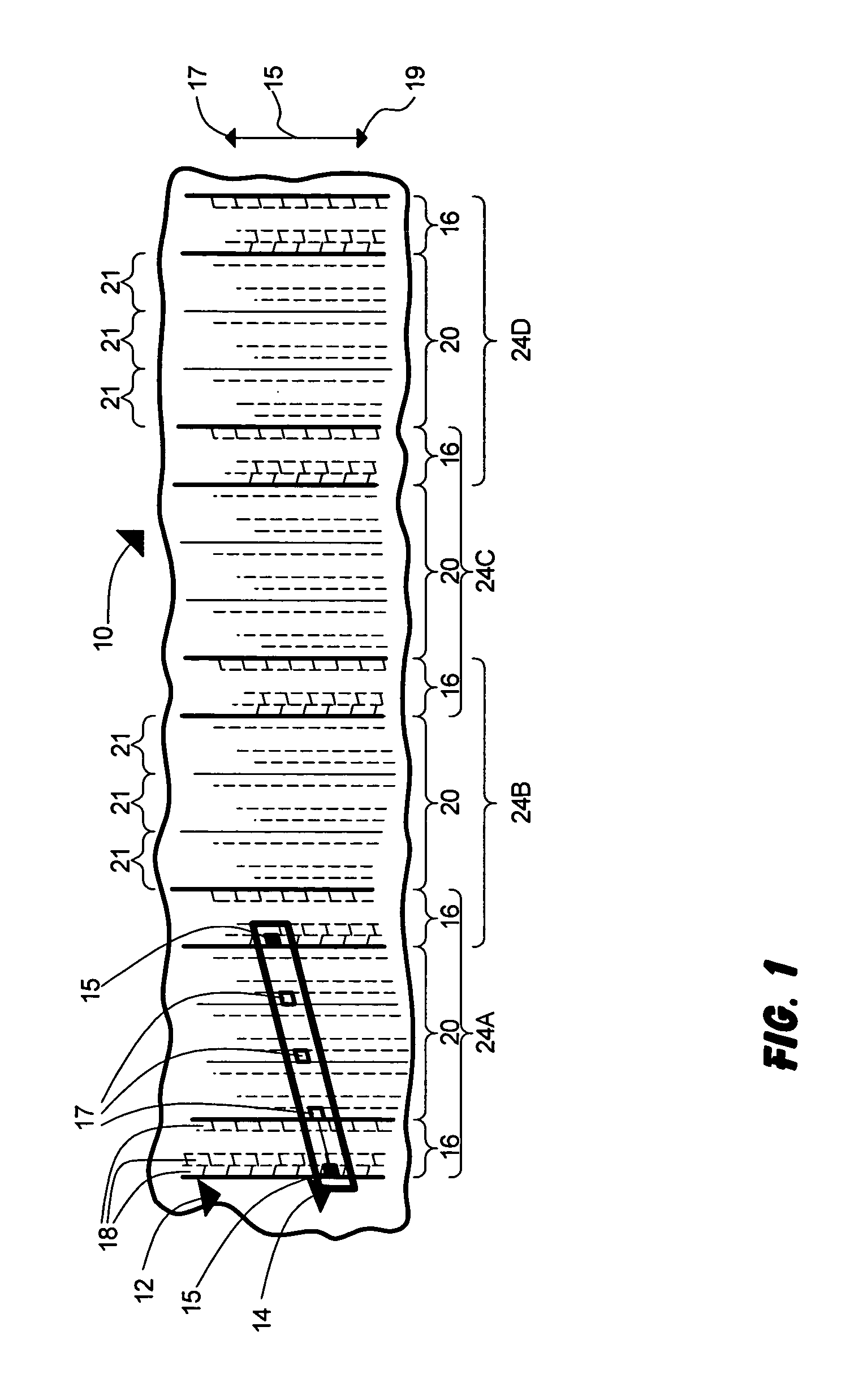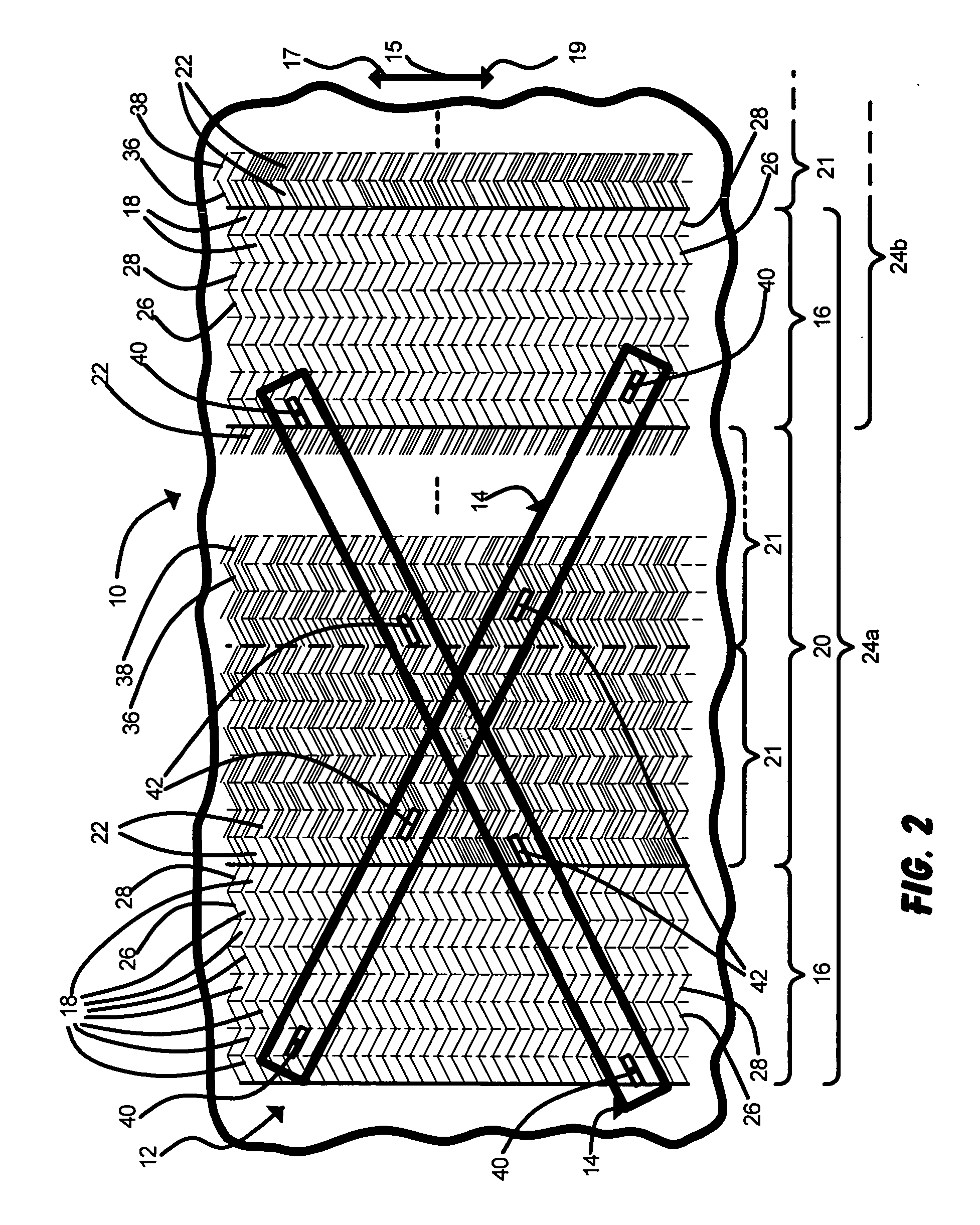Servo systems, servo heads, servo patterns for data storage especially for reading, writing, and recording in magnetic recording tape
- Summary
- Abstract
- Description
- Claims
- Application Information
AI Technical Summary
Benefits of technology
Problems solved by technology
Method used
Image
Examples
Embodiment Construction
[0138]The embodiments of the present invention described below are not intended to be exhaustive or to limit the invention to the precise forms disclosed in the following detailed description. Rather a purpose of the embodiments chosen and described is so that the appreciation and understanding by others skilled in the art of the principles and practices of the present invention can be facilitated.
[0139]FIGS. 1, 2, and 3 schematically show one embodiment of a data storage system 10 of the present invention that combines azimuth servo features, azimuth data features, and servo and data transducers that are generally co-linear and / or are parallel to the corresponding azimuthal transitions of the servo and data bands during reading, writing, and erasing operations. System 10 is in the exemplary form including a magnetic recording tape 12 (a portion of the length being shown) that is readingly, writingly, and erasingly coupled to read / write head 14.
[0140]Tape 12 includes one or more ser...
PUM
| Property | Measurement | Unit |
|---|---|---|
| Length | aaaaa | aaaaa |
| Time | aaaaa | aaaaa |
| Electrical conductivity | aaaaa | aaaaa |
Abstract
Description
Claims
Application Information
 Login to View More
Login to View More - R&D
- Intellectual Property
- Life Sciences
- Materials
- Tech Scout
- Unparalleled Data Quality
- Higher Quality Content
- 60% Fewer Hallucinations
Browse by: Latest US Patents, China's latest patents, Technical Efficacy Thesaurus, Application Domain, Technology Topic, Popular Technical Reports.
© 2025 PatSnap. All rights reserved.Legal|Privacy policy|Modern Slavery Act Transparency Statement|Sitemap|About US| Contact US: help@patsnap.com



